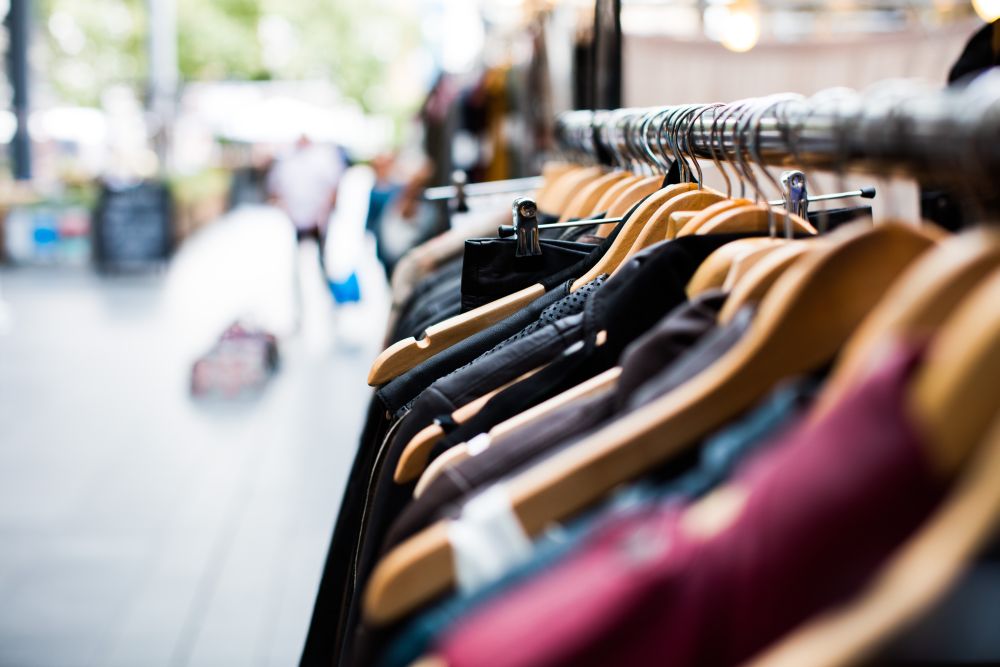
If you want to limit the environmental impact you have when you buy clothing, then second-hand clothes are a good option. Buying second-hand clothes is ethical and benefit from reducing the fashion industry's carbon footprint.
“The reuse and recycling of the exported textiles leads to annual net savings of around 190 000 tonnes CO2 equiv of greenhouse gases and offset 70 million cubic meters of water use by offsetting production of new textiles/materials. “ said David Watson in the EXPORTS OF NORDIC USED TEXTILES study from Denmark in 2016.
Panaprium is independent and reader supported. If you buy something through our link, we may earn a commission. If you can, please support us on a monthly basis. It takes less than a minute to set up, and you will be making a big impact every single month. Thank you!
Is it sustainable to buy second-hand clothing?
There is an enormous advantage to thrifting, there is no denying that. That even the case when you buy fast fashion second hand. Any garment that is purchased through the second-hand market doesn't save the manufacturing of a new item.
In addition, it reduces the impact of its manufacturing process on the planet. If you want to minimize your environmental impact and shop eco-friendly as much as possible, then choose second-hand clothing that is also made of natural organic materials. The fabrics made from bio-based materials from plants are also bio-degradable.
They don't require any product from oil. However in some cases. They may still need lots of energy, water, and chemicals for manufacturing the finished product. You might want to learn more about eco-friendly materials here to get a better idea of how to pick sustainable clothing.
Second-hand clothing with fabrics made from plants such as organic cotton, hemp, and linen are very good for your skin, your wallet, and the planet. In some cases, buy such type of clothing saves a lot of energy and resources.
Always try to look for certification standards before buying eco-friendly clothing. You have to make sure the claims are verified. The raw materials should be organic and fair trade. Even recycled materials such as recycled polyester and nylon are a lot better than their virgin version.
When you are shopping for sportswear such as leggings and sports bras, look your blends of recycled nylon or polyester with spandex or Lycra.

Is it better to buy second hand or new clothing?
Of course, buying second hand is not as good for creating jobs and economic growth. But nowadays, most clothing is produced in the poorest countries such as Bangladesh. It is important to make the choices that are right for you, considering all aspects of the supply chain.
For local clothing manufacturers, it is very difficult to compete with cheap new clothing from China, Taiwan, and Vietnam. Buying second-hand clothing is ethical even if its fast fashion and the clothes are coming from these countries.
Second-hand clothing is gaining popularity again. Due to rising concerns for the environment, manufacturers, brands, and retailers are also trying to make an effort to reduce the damage done in the past.
The second-hand clothing market and the manufacturing market are completely different. They can co-exist without affecting each other.
In many developing countries like Cameroon, there are still many people that cannot afford to replace used clothing with new pieces. They have to buy from the second-hand clothing market.
Who is the biggest exporter of second-hand clothing?
Globally the second-hand clothing market was valued at over 4.3 billion USD in 2013 according to published United Nations statistics. In 2013, there were 3.9 million tonnes of old clothing being exported globally.
The UK is the second-largest exporter in the world, to countries such as Ukraine, Poland, Pakistan, and Ghana. In 2018, it exported 543 million USD or 395,000 tonnes of used clothing.
The United-States is the largest exporter of used clothing: 675 million USD of used clothing were exported in 2018 to Canada (for sorting and re-export), India, Guatemala, Chile, and the United Arab Emirates.

Is buying second-hand clothing popular?
Second-hand clothing is particularly popular for consumers who practice voluntary simplicity or minimalism. Reducing the clutter in their life, trying to find more purpose and shopping consciously.
Second-hand clothing is also amazing to find something unique, not available on the main market. You are less likely to meet someone wearing the same pieces when shopping second hand. You can express your uniqueness, originality, creativity or nostalgia.
For some, second-hand clothing is helpful to be happier with their wardrobe, redefining their personal style. Overall buying less helps saving money and to keep an organized closet. A combination of new sustainable pieces from ethical brands and second-hand clothing is a good way to have enough variety.
In the past 40 years, there has been an increase in second-hand consumption among consumers. Second-hand clothing is becoming stylish and cool. But it stays a niche form of consumption.
If you decide to buy second hand, know that you are helping the environment. You can also reduce poverty by donating your used and unwanted clothes. More and more people are realizing that they are responsible for environmental pollution and the depreciation of resources. They see the role they play and try to adopt a new lifestyle accordingly.

How large is the second-hand clothing market today?
The second-hand apparel market is valued at 32 billion USD in 2020 and is expected to reach 51 billion USD in 2023, according to the report “Value of the clothing resale market worldwide from 2012 to 2023” published by Liam O'Connell on May 17, 2019.
Overall it is an easy solution to reduce your environmental impact. Buying second-hand clothing is an ethical and sustainable solution.
If you are aware of the huge disastrous impact of fast fashion, then why not start your new shopping journey here to be more sustainable and socially-aware.
Was this article helpful to you? Please tell us what you liked or didn't like in the comments below.
About the Author: Alex Assoune
What We're Up Against
Multinational corporations overproducing cheap products in the poorest countries.
Huge factories with sweatshop-like conditions underpaying workers.
Media conglomerates promoting unethical, unsustainable products.
Bad actors encouraging overconsumption through oblivious behavior.
- - - -
Thankfully, we've got our supporters, including you.
Panaprium is funded by readers like you who want to join us in our mission to make the world entirely sustainable.
If you can, please support us on a monthly basis. It takes less than a minute to set up, and you will be making a big impact every single month. Thank you.































0 comments